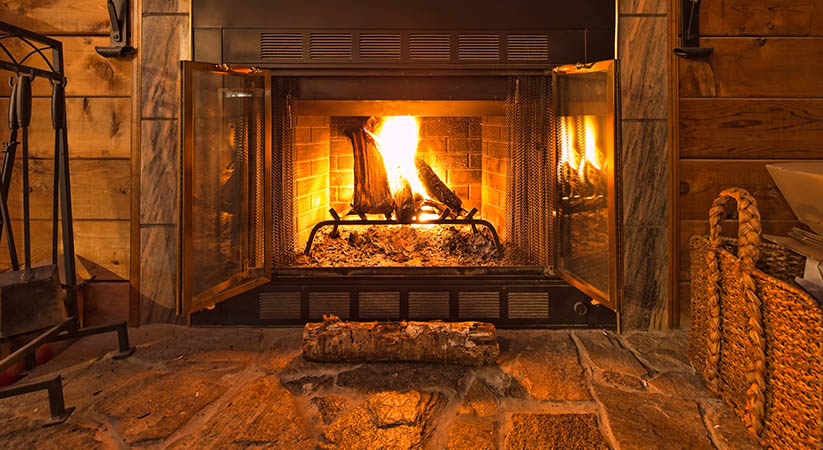Creosote is a black, tar-like material that is formed due to the burning of wood in fireplaces. It is produced in a natural process, but it is a highly-flammable material. If the buildup of creosote is high in your fireplace and chimney, it can start a fire. To avoid chimney fires, chimney sweep services are hired for cleaning the chimney and removing creosote and soot.
Chimney cleaning is done once a year, but to keep your family and home safe, you should consider ways to minimize creosote buildup.
Use Dry, Seasoned Wood
If you have a wood-burning fireplace, one habit that can significantly reduce creosote buildup is burning seasoned wood only. Seasoned wood is safely stored for 6-12 months. This is done to dry the wood and remove as much moisture from it as possible.
Dry firewood is preferred for fireplaces because it produces less smoke, which in turn, creates less soot and creosote. If you use freshly cut wood, it will have high levels of moisture in it. This wood creates more smoke when burning and accelerates the production of soot and creosote residue on the walls of your chimney and fireplace.
Furthermore, green wood (freshly cut wood) also is the culprit of inefficient heating because most of the energy is wasted in the evaporation of moisture inside the logs. So, the room will feel less warm.
To identify the moisture levels in wood, use a wood moisture meter. When determining the moisture reading, split the wood log in two and test the inner part because the outer logs dry up faster than the inner part of the wood.
Avoid Using Artificial Logs
Drying wood is a time-consuming process and identifying dry wood also takes effort, so it’s tempting to use artificial logs for your fireplace. These logs produce a big amount of combustion gases which can stick to the walls of the chimney and fireplace as soot and creosote.
Moreover, the heat provided by artificial logs is lower than dry wood because you can only burn one artificial log at a time.
Prefer High-Intensity Fire And Avoid Smoldering Fire
Smoldering fire, slow fire, or fire that seems that it will die out shortly create more gases and creosote than high-intensity fire.
The kind of fire you want depends greatly on the amount and the arrangement of the firewood. For hot and cleaner fires, keep the logs tightly close to each other and allow very small spaces for airflow. Plus, don’t close the fireplace door before the fire gets hot enough.
Keep in mind the arrangement of the logs and proper airflow go hand in hand when it comes to producing efficient and clean fire. Oxygen helps in combustion and more oxygen will allow for better combustion with lesser smoke.
Warm Up Your Cold Chimney Flue Before Starting The Fireplace
Chimneys that aren’t insulated or waterproof are prone to condensation. This results in water damage and more creosote buildup. To avoid these problems, consider waterproofing your chimney.
In the meantime, for minimizing creosote production, warm up the flue before starting the fire in the fireplace. For this, you need a newspaper and 2-3 minutes. Roll up a newspaper and light up its top. Hold or keep it in the fireplace. When you notice that the smoke is going straight up, start the fireplace with good logs’ arrangement and airflow.
Which Type Of Creosote Buildup Does My Chimney Have?
- Stage 1: A thin layer of creosote and soot is common in chimneys. You can remove it with a simple chimney brush.
- Stage 2: When the creosote buildup increases, it becomes harder to remove. You may need a power drill and brush to remove stage 2 creosote. It should be removed by chimney cleaning experts.
- Stage 3: When the creosote buildup reaches a point that it occasionally drips on the fireplace, it is stage 3 creosote. It must only be cleaned by experts. But mostly, it’s better to replace the flue liner instead of cleaning the creosote because it is extremely difficult to remove and the process can damage the flue.
Conclusion
Reducing creosote buildup will keep your house safe. Having said that, have chimney cleaning services Ellicott City inspect and clean your chimney at least once a year.



